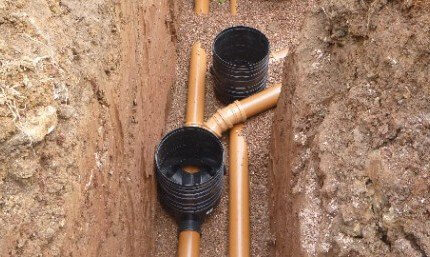What Is Meant By Foul And Surface Water Drainage?
What is the difference between Foul and Surface Water Drainage?
What is Foul Water Drainage?
Put basically, Foul Drainage is the system of pipework that carries waste water away from a bathroom, kitchen or utility room. For all properties connected to mains drainage, foul sewers will eventually transfer the contents of the underground drainage system to a local sewage treatment plant.
What is Surface Water Drainage?
Surface Water Drains are used to carry away rainwater from gutters, patios & driveways, roads and sports fields. The rainwater, which is not contaminated and hence is not harmful, will be transported to a stream, a river or a soakaway crate.
Keeping Drainage Systems Separate
Unless you live in an old property which is connected to a combined drainage system (where both foul and surface water run through one set of pipes), foul drainage and surface water should always be kept apart in completely separate drainage systems.

Is my Drainage Connected Properly?
The two types of sewer networks that take your surface water and foul water away from your property:
- Foul (wastewater) sewer - this is where all flows from household appliances are taken to a treatment works. This wastewater is then treated so that it can safely be released back into the environment
- Surface water sewer - this is where clean stormwater that has run off roofs, driveways and pavements is taken to watercourses (such as rivers or seas).
If any of your wastewater leads into the surface water sewer then it will pollute local water courses. If stormwater drains are connected to a foul sewer then it could lead to flooding.
Misconnections of sewers usually occur when work has been carried out to extend or improve a house or when a new house has been built. However, it could also be due to the installation of a new appliance. If you believe that your property could be misconnected then we would recommend getting specialist expert advice.
What if I am Not Connected to the Main Sewer Network?
If you aren't connected to the main sewer network then you can install your own sewage treatment plant which you can connect to your waste water. The plant is designed to remove bacteria and other unwanted contaminants from the waste water. The aim of the treatment plant is to produce an environmentally safe effluent and a solid waste that can be disposed of or re-utilised as fertiliser.
Septic tanks can also be used to collect foul water drainage - if this is the case then the effluent should be discharged through a soakaway system (rather than straight into a watercourse) as the soil, will provide an additional form of treatment for the waste water from the septic tank during infiltration.









